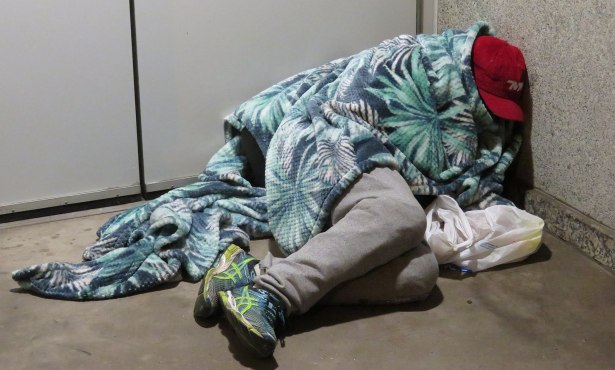Santa Barbara’s Ad Hoc Committee on Homelessness Shares Key Findings, Recommendations
Top Goals Include More Emergency Shelter Beds and Interim Housing, Daytime Navigation Center, and Non-Congregate Shelters

The City of Santa Barbara’s Ad Hoc Committee on Homelessness presented key findings and recommendations regarding the city’s day-to-day management of homelessness in a report to the City Council on Thursday, May 11.
Over the past year, the committee — composed of councilmembers Eric Friedman, Kristen Sneddon, and Michael Jordan and city staff liaisons Barbara Andersen and Elizabeth Stotts — has conducted research and stakeholder interviews to identify best practices for reducing homelessness at the city and county level.
Per the 2023 Point-in-Time Count, the city would need a total of 226 beds to address all individuals experiencing homelessness — whether they are sleeping on the streets or otherwise unsheltered — according to Andersen, senior assistant to the city administrator.
Recommendations include more emergency shelter beds and interim housing units (like DignityMoves’ tiny homes) to meet that need, as well as more opportunities for individuals to be stabilized and receive health care prior to being referred to or placed in permanent housing.
The report puts emphasis on beds for medical recuperative care and behavioral health treatment — a top priority across the county. According to the report, a significant percentage of the city’s unhoused population has chronic health conditions, substance-abuse disorders, and/or co-occurring mental-health disorders.
However, the committee noted that the state’s Housing First mandate is insufficiently funded to meet the required level of supportive services necessary for housing the most vulnerable.
Andersen said the city is sharing its “day-to-day experiences with homelessness” to advocate for the reallocation and reprioritization of local resources to focus not only on permanent housing but also interim housing, medical recuperative care, and emergency shelter beds.
“We either need more flexibility in housing individuals that require less supportive services, or we need much more funding for the proper level of supportive services,” she said.
The committee is also requesting that local funding in the county be distributed proportional to the total population experiencing homelessness in each city. The report’s executive summary will soon be shared with other cities in the county, the League of California Cities, and Santa Barbara’s elected officials in Sacramento.
The city invested $9.8 million to address homelessness in the 2022 fiscal year and anticipates reporting the accomplishments, lessons learned, and any readjustments to their strategies in the coming months.
“Moving forward, the city has been focused on vetting locations for a daytime navigation center,” Andersen said. “One of the policy priorities is making sure that we have more daytime support for our unsheltered population when they’re required to leave an emergency shelter location and then return that evening.”
The city is headed toward a non-congregate shelter model because it “gives people privacy and dignity,” Andersen added.
Approximately 208 units are in the works in South County that are a mix of interim housing and permanent supportive housing units. “In the next 12 to 18 months, things are going to be — we’re hoping — noticeably improved,” Andersen said.



